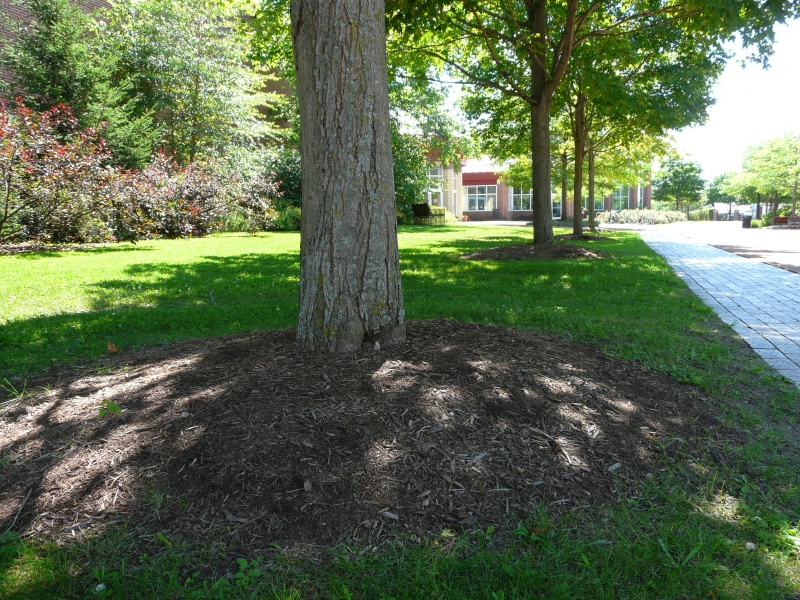
Volcanoes in Northern New York?
When you think about it, trees in our landscape have it pretty rough. They don’t get to choose their neighborhood; good, bad or indifferent. Depending where they’re planted they may have to contend with “visits” from territorial dogs, “materials testing” by late-night fraternity mobs, entanglements with errant kites, and other issues.
Rooted in one spot day in and day out, year after year, they suffer from—well boredom, I imagine. And from restricted root area, drought stress, competition from turfgrass, reflected heat from pavement and buildings, deicing salt in the soil, that sort of thing.
But in recent years there has been an epidemic of seismic proportions that threatens the well-being of our beloved shade trees. Volcanoes. That’s right, over the past ten to twenty years we’ve had an outbreak of mulch volcanoes. They seem to erupt at the base of landscape trees, particularly young ones, and the results aren’t pretty.

Seismologists and botanists are hard at work trying to account for this phenomenon. Until a cure can be found, though, the public is urged to watch for rogue volcanoes in their neighborhood, and to report them to property owners. Be on the lookout for sudden eruptions of much around the base of trees. It can happen seemingly overnight, especially on commercial and institutional properties.
Banking mulch around the trunk of a tree can have severe detrimental health effects (for the tree, just to be clear). For one thing, insect pests are chickens. Like vandals and Internet trolls, they rarely do their dirty work in the light of day. No, they like it dark, and preferably damp, like under a pile of mulch (or in Mom and Dad’s basement, in the case of trolls). Wood borers and bark beetles love a mulch volcano because it gives them free access to the tree trunk.
Who doesn’t like a cute rodent? OK, some of us probably don’t. Trees aren’t fond of rodents either. Mice, meadow voles and pine voles all enjoy the taste of tree bark. The trouble is, eating it takes them a long time, during which they’re vulnerable to predators. But under a mulch volcano, lunch is on.
Tree roots need oxygen. This may seem obvious—of course they do, and they get oxygen through their veins, right? Well, no. Trees have vascular systems and they do make oxygen via photosynthesis, but they lack something akin to hemoglobin to transport oxygen to all their parts. Turns out that roots get their oxygen through the soil surface. Anything that obstructs access to the surface will smother roots. So, how long can you hold your breath?
Another problem is adaptation. Generally that’s a good thing. To the extent possible, trees are “self-optimizing.” They adapt and respond to changes in their environment. But mulch volcanoes are a different story.
When their trunks become buried by a mulch volcano, which limits oxygen to their natural roots, trees begin making adaptive, or adventitious, roots to compensate. Fine rootlets issue from the trunk in response to being smothered by wood chips. However, over time as the mulch volcano breaks down and subsides, those tender roots dry out and die, stressing the tree.
Finally there’s the issue of water. Transplanted trees may need additional water for several years. The rule is one additional year of watering for each inch of trunk diameter. Mulch volcanoes act like a thatched roof, shedding water very effectively. For a mature tree that’s not a problem, but a young tree may have all or nearly all its roots under that mountain of mulch, (not) nice and dry.
Maintaining two to four inches of mulch around a tree (twice the branch length is ideal) is beneficial, as long as the mulch doesn’t contact the trunk. Help stamp out mulch volcanoes in your lifetime!
For more information on tree care, contact your local Cornell Cooperative Extension, or New York State Department of Environmental Conservation office.

